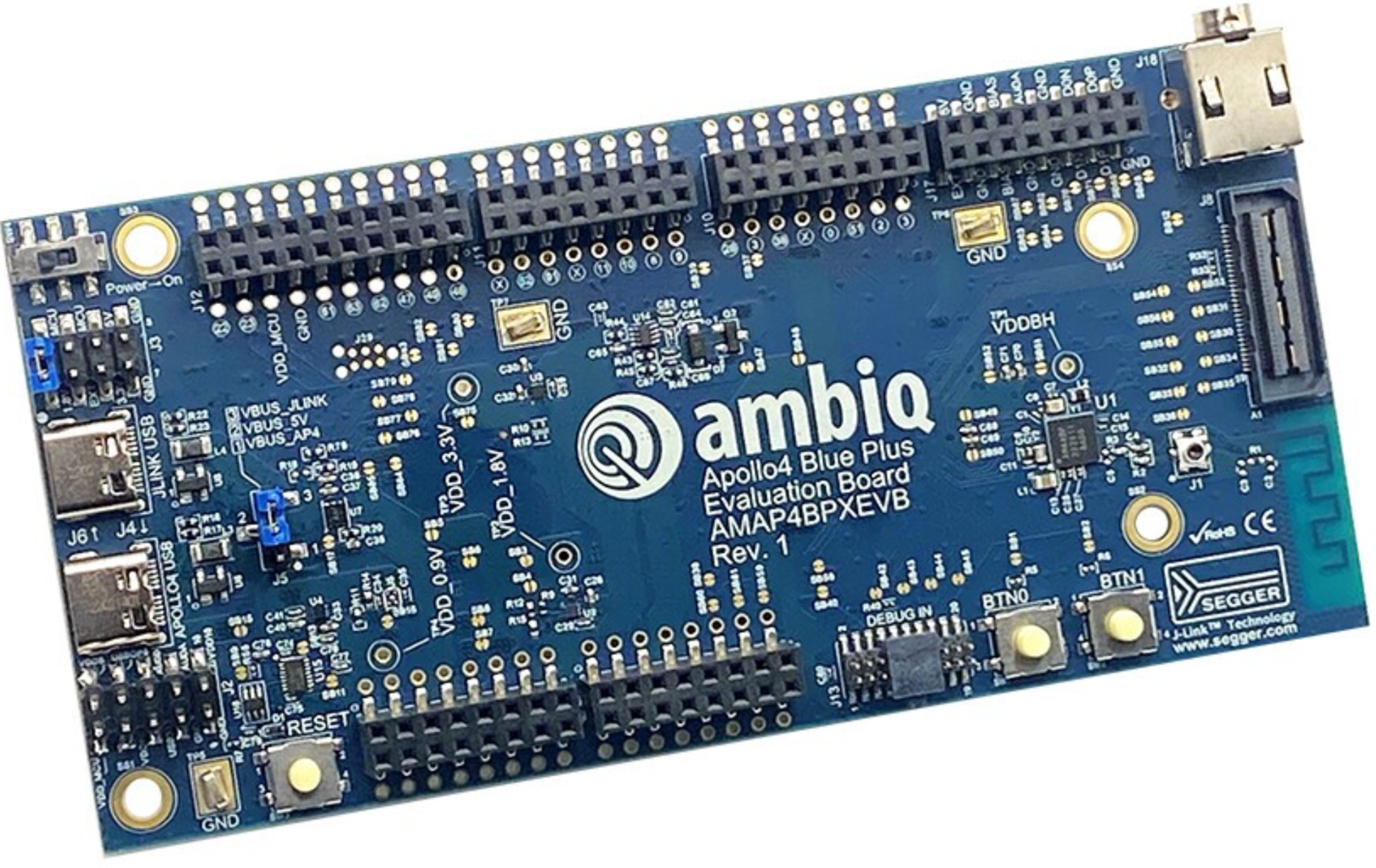
Ambiq Apollo4 Blue Plus KXR Eval Board
Deployment options
Edge Impulse firmwareThere is a firmware deployment option in Studio for the Apollo4 Blue Plus EVB. For the other Apollo4 boards, you will need to modify and recompile the firmware found in the Edge Impulse firmware-ambiq-apollo4 GitHub repo.
Ambiq Apollo4 Blue Plus EVB firmware
Ambiq Apollo4 Blue Plus EVB firmware
A binary containing both the Edge Impulse data acquisition client and your full impulse.
Installing dependencies
To set this device up in Edge Impulse, you will need to install the following software:Connecting the Apollo4 Audio Add-on Board (Models with Audio Input Only)
This step is only needed when using models requiring microphone input, such as the example below. Skip this section if you are testing other models that do not need audio input. Remove the pin header protectors on the Apollo4 Plus EVB (AMAP4PEVB) or Apollo4 Blue Plus KXR EVB (AMAP4BPXEVB), and carefully plug the Apollo4 Audio Add-onBoard (AMA4AUD) into the development board. Pay special attention to the highspeed connector with film tape, which must be removed before connecting the boards. Place the digital and analog microphone modules onto the shield, as shown in the image below, and connect cables to both type-C connectors on the evaluation board.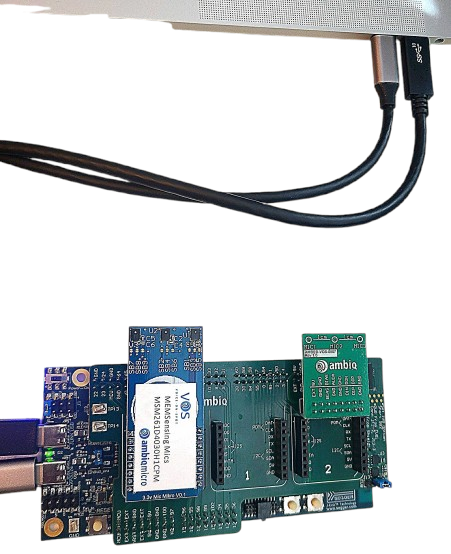
Apollo4 Blue Plus and Apollo4 Audio Add-on Board connected to computer
Connecting an ArduCam Mega 5MP SPI
This step is only needed when using models requiring camera input. Skip this section if you are testing other models that do not need camera input. The ArduCam Mega 5MP SPI connects to the Apollo4 Plus EVB and Apollo4 Blue Plus KXR EVB pins as shown in the table below:| Camera Pin | EVB Pin |
|---|---|
| GND | Any EVB GND |
| 5V/VDD | Any EVB 5V |
| SCK | Pin 8 |
| MISO | Pin 10 |
| MOSI | Pin 9 |
| CS | Pin 11 |
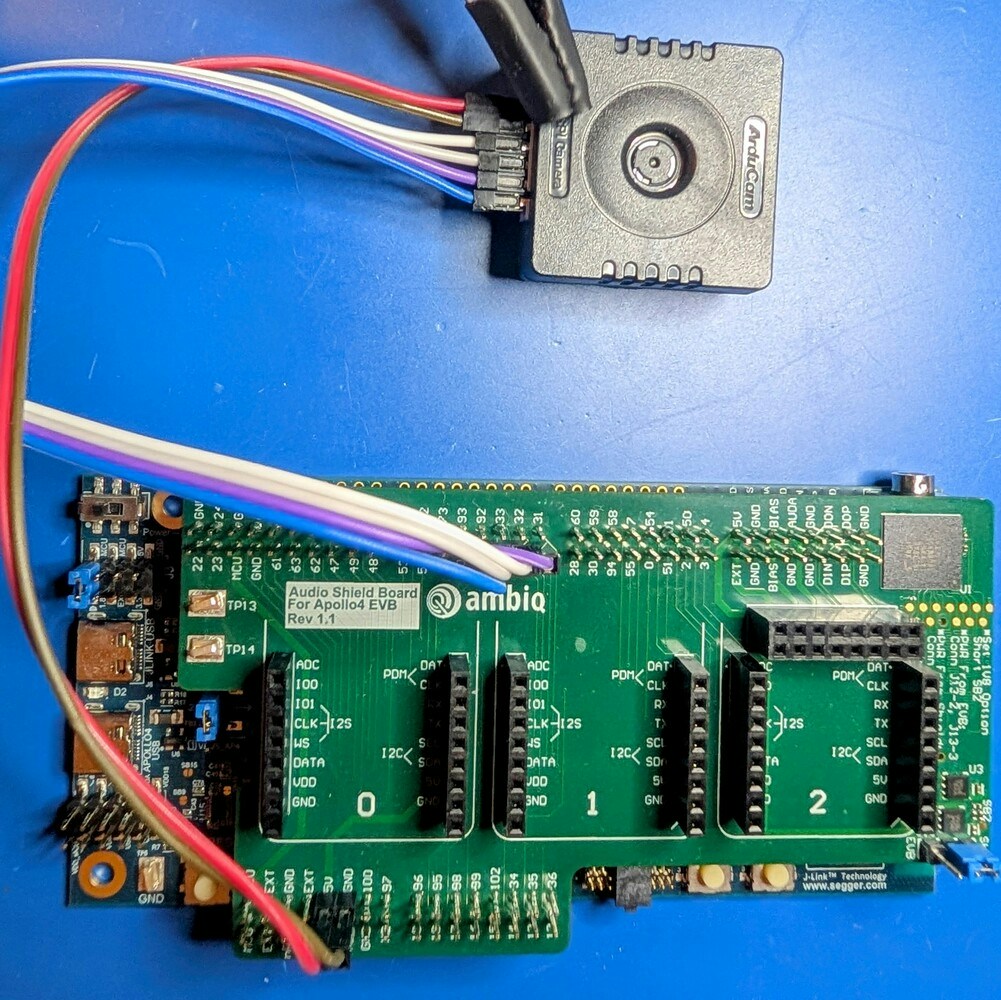
ArduCam connected
Flashing pre-built firmware
Pre-built image with only audio support and “Hello World” detector example here Pre-built image with full video and audio data collection and FOMO Face detector example here Get started by extracting the archive and choose the appropriate script for your system architecture to flash the firmware: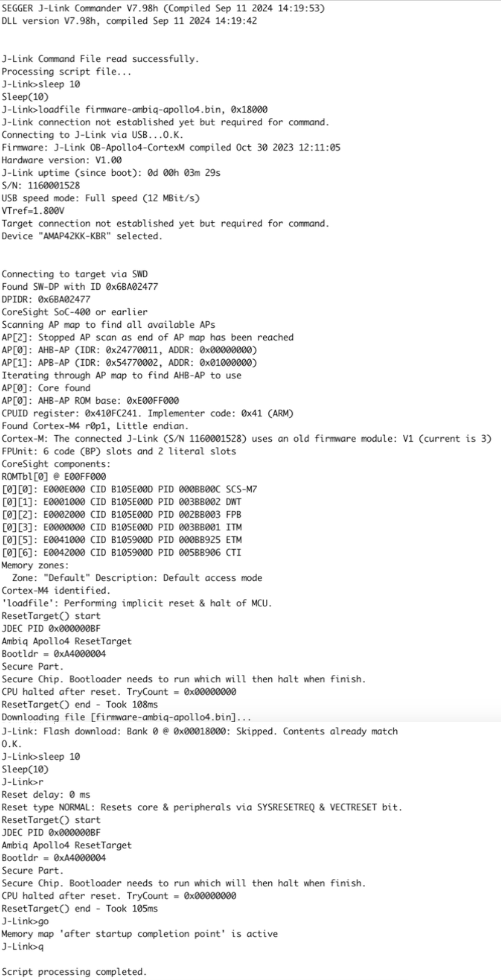
Flashing new firmware
Connecting to Edge Impulse
Using the daemon
From a command prompt or terminal, run:--clean.
Alternatively, you can access the project API Key as shown below by navigating to the Dashboard section on the left pane of your Studio project and select the Keys tab, then click the copy/paste icon next to the API Key to copy the entire text to your clipboard, then run:

edge-impulse-api-key
Connecting to Studio
Run theedge-impulse-daemon and connect to your project, you will be prompted to name your device:
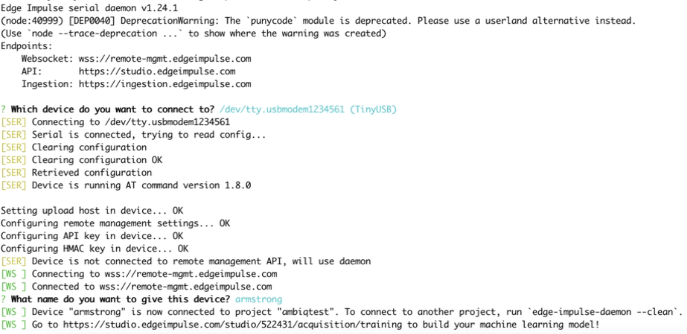
Connecting to Edge Impulse.

Device connected to Edge Impulse.
Collecting data
Audio
With the device connected to Studio, you can use it to collect audio data up to 5 seconds in length for training and testing your model. Navigate to the Data acquisition tab and start collecting samples: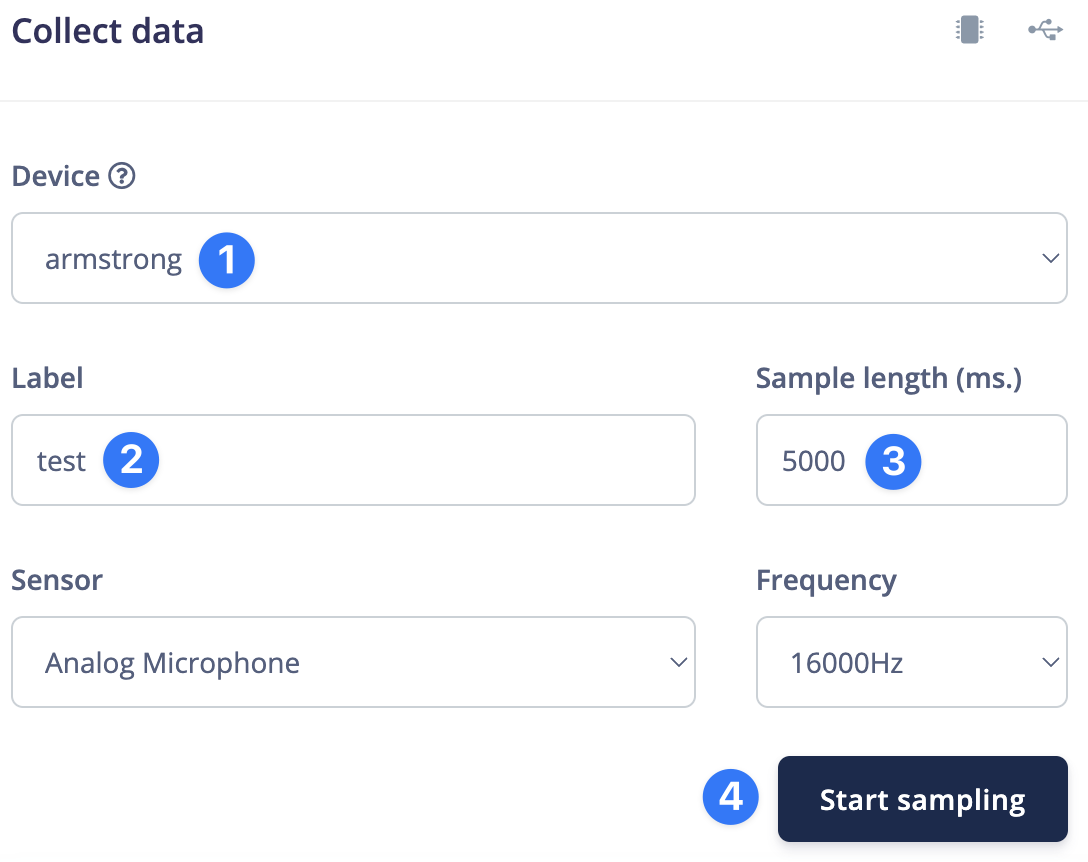
How to collect an audio sample
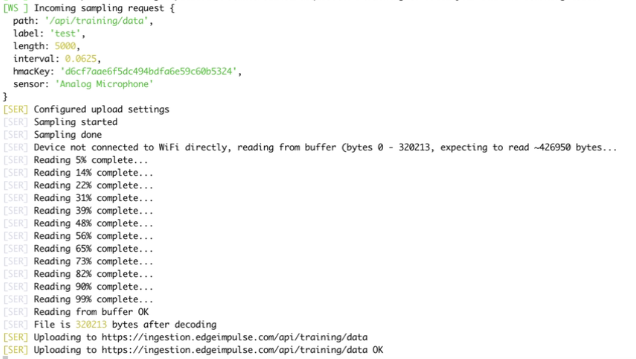
Collecting an audio sample

Example sample
Video
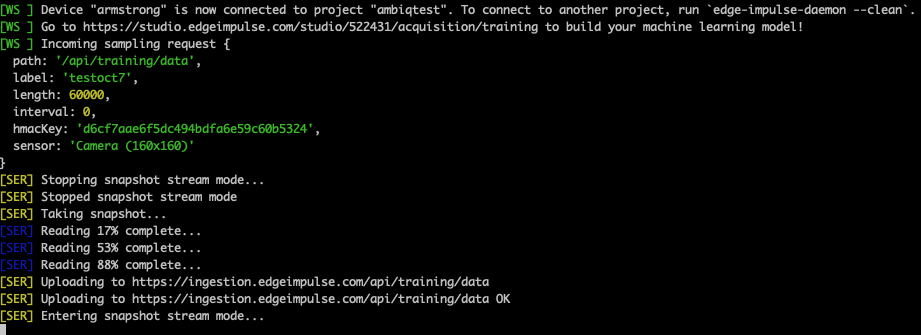
How to collect an image sample
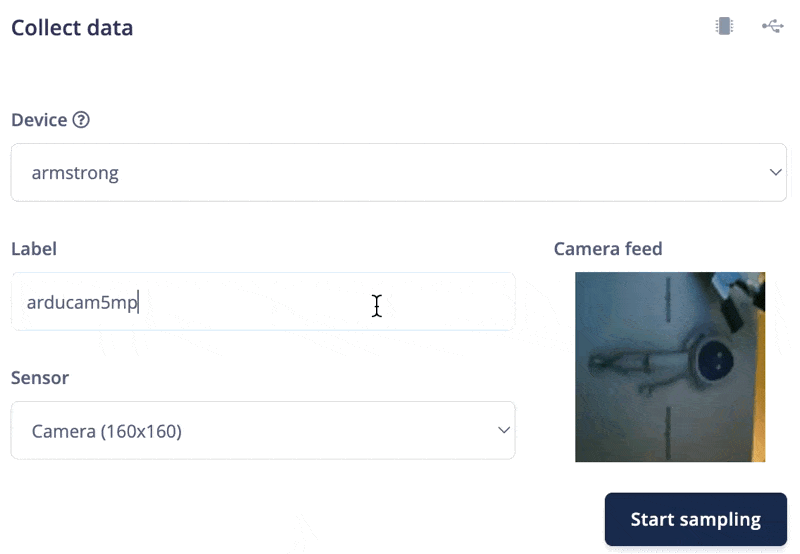
Collecting an image sample
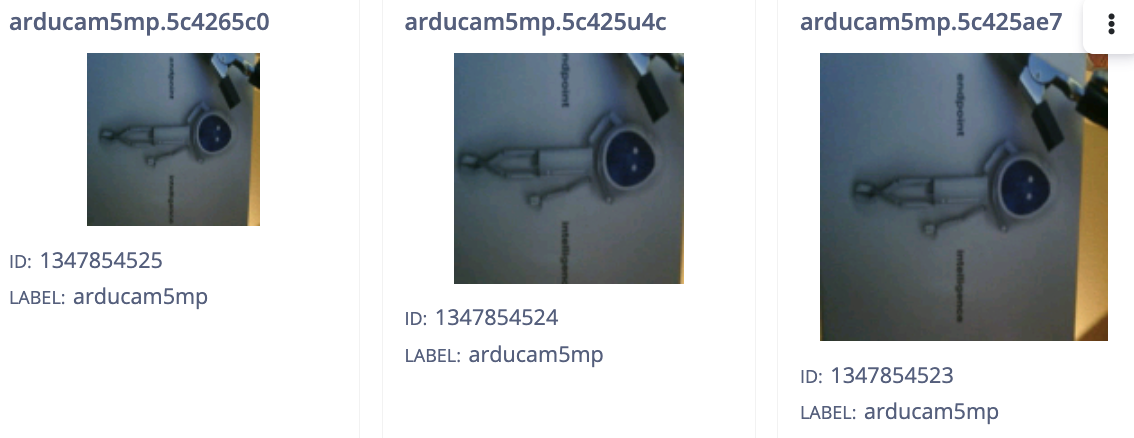
Three different options
Next steps: building a machine learning model
With everything set up you can now build your first machine learning model with these tutorials: If you flashed the pre-built binary with FOMO Face Detection example from above then just connect your board and runedge-impulse-run-impulse to see an output similar to this:
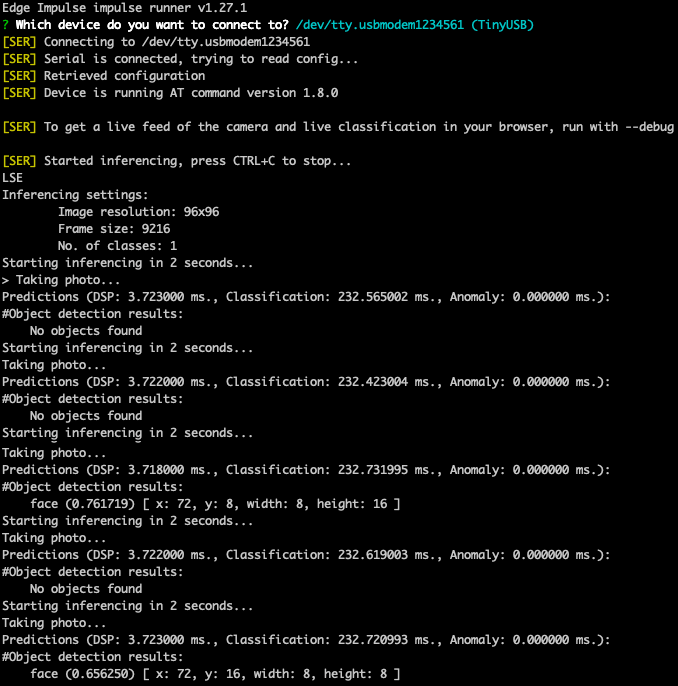
FOMO Face detect output
Example project
Start by going to your Studio projects then create a new project and navigate to theCreate impulse section of Impulse design, at which point you will be prompted to select your target, choose the Apollo4 Plus:
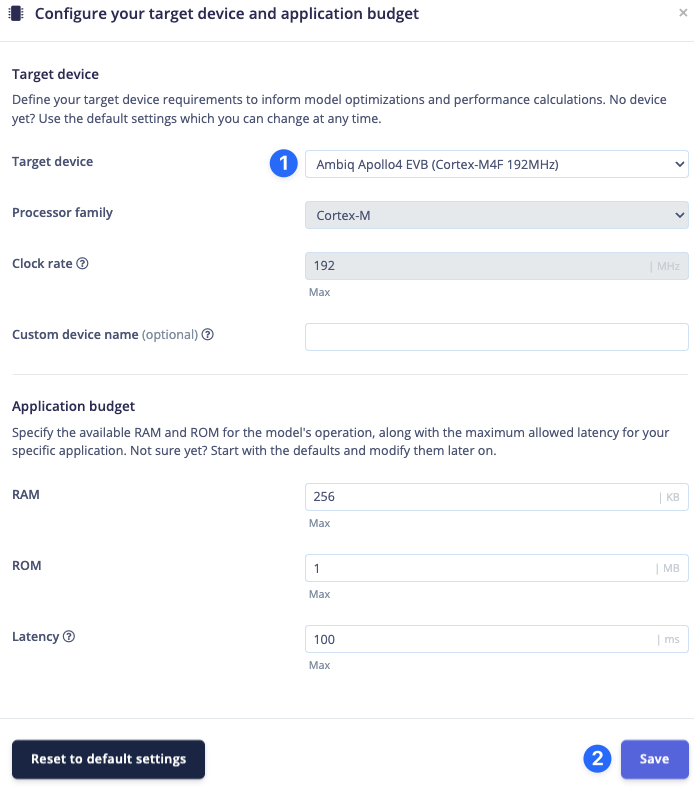
Choosing target hardware
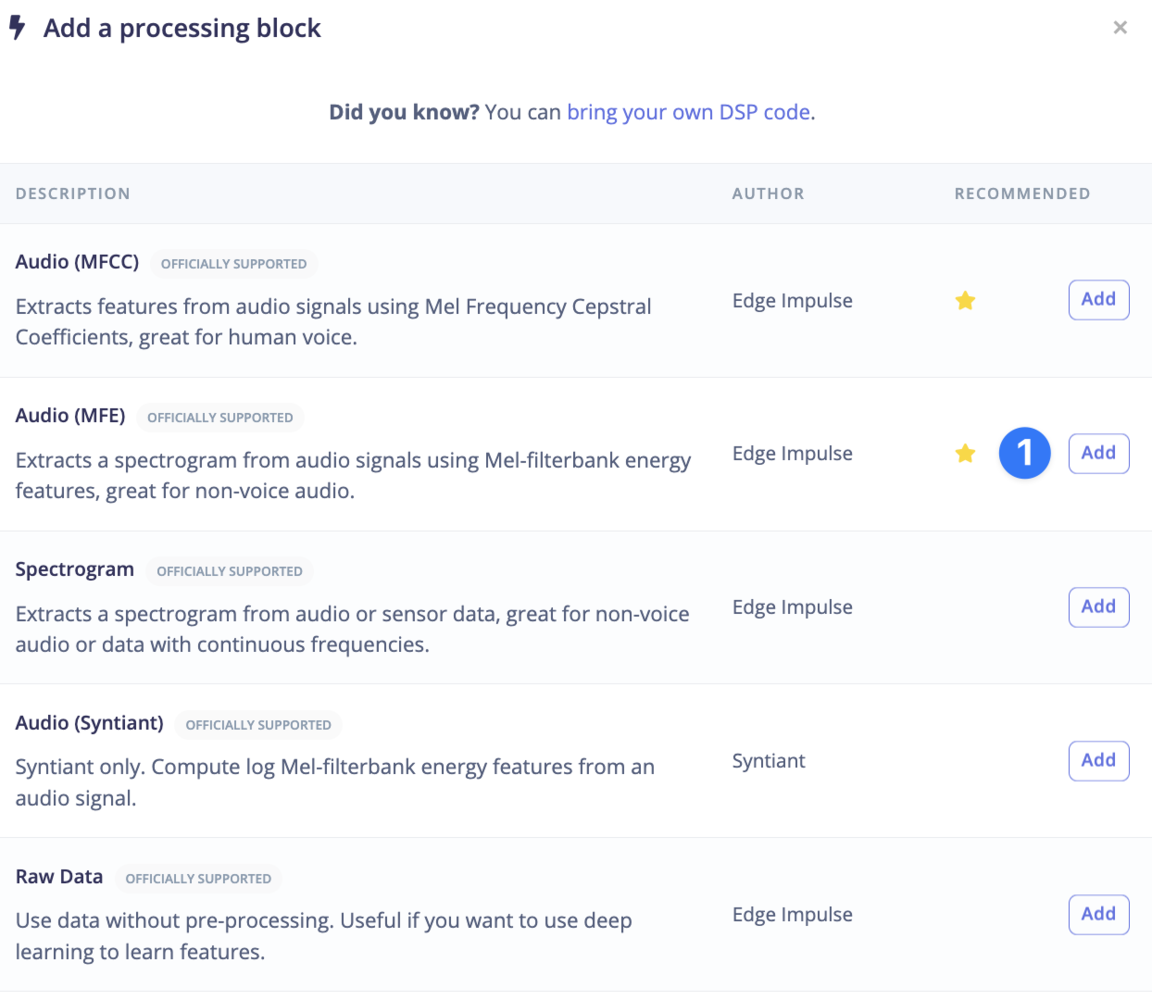
DSP
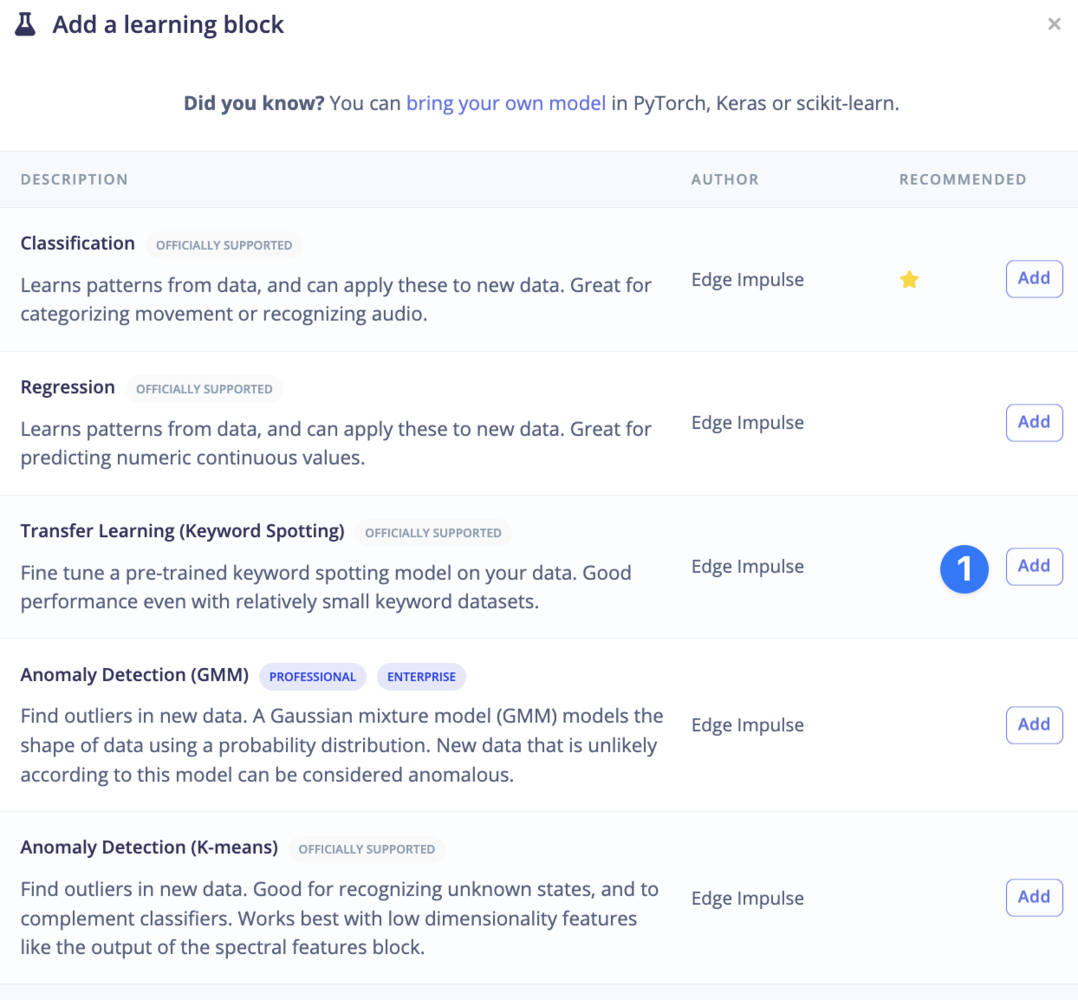
KWS
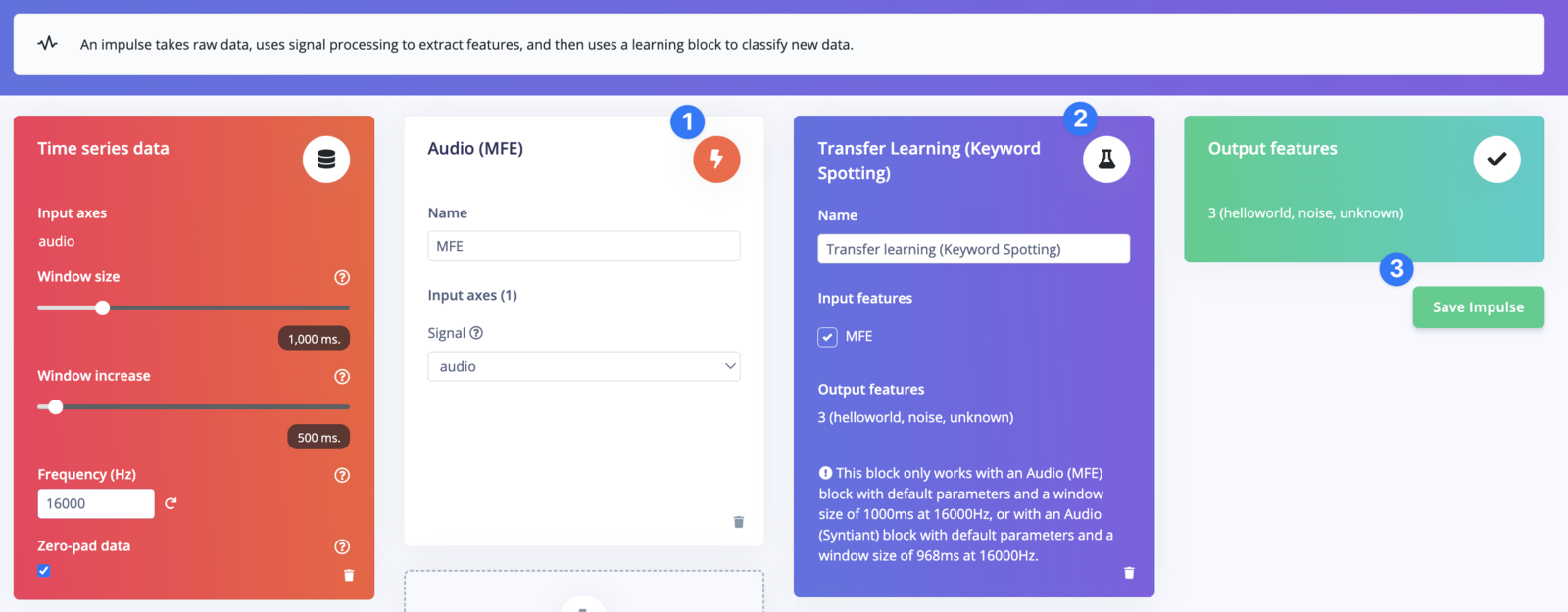
Saving it all
Processing
Now select the DSP block:
Select DSP
Generate features:
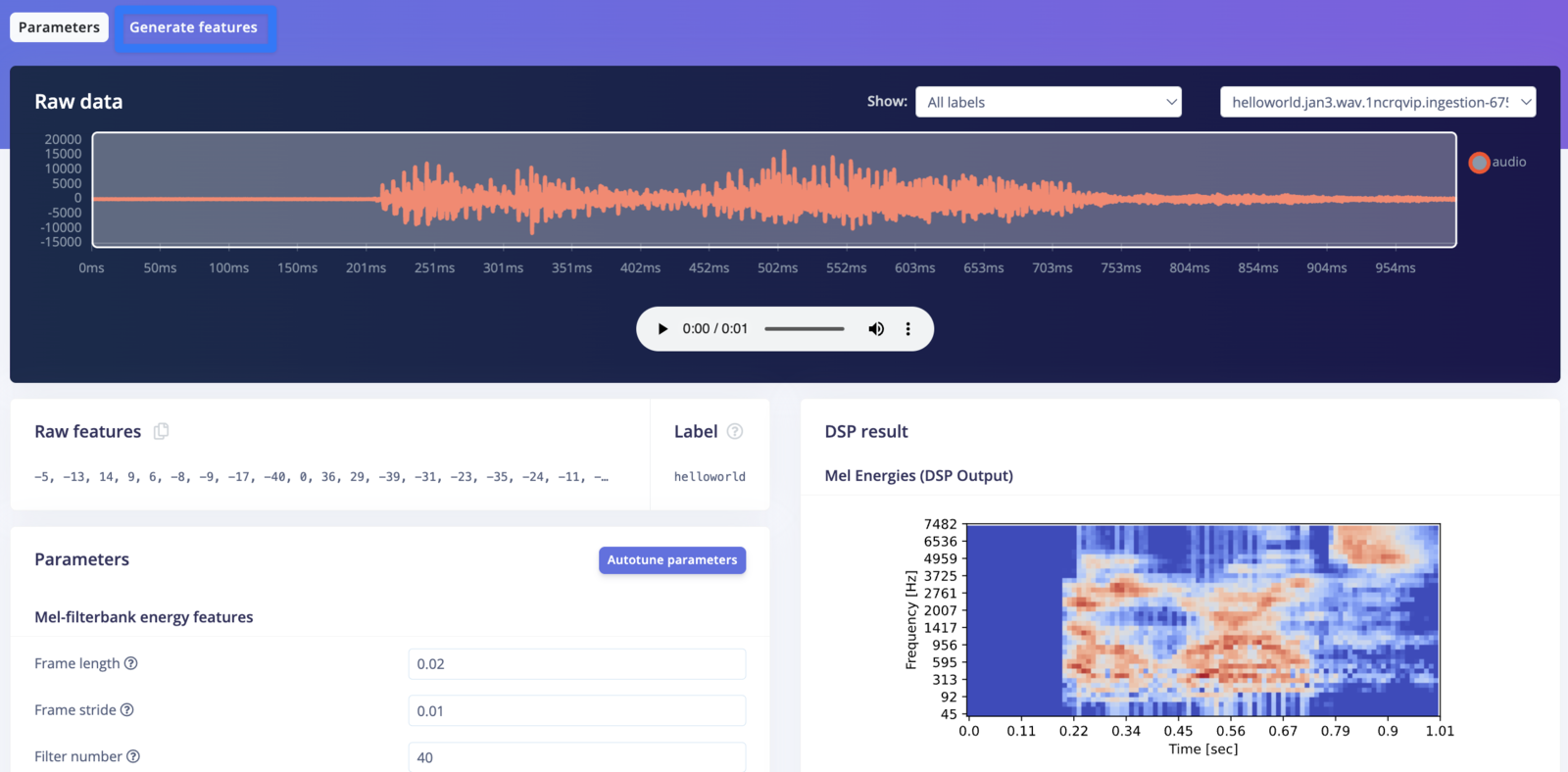
Generate features

DSP complete
Training
Select the learning block: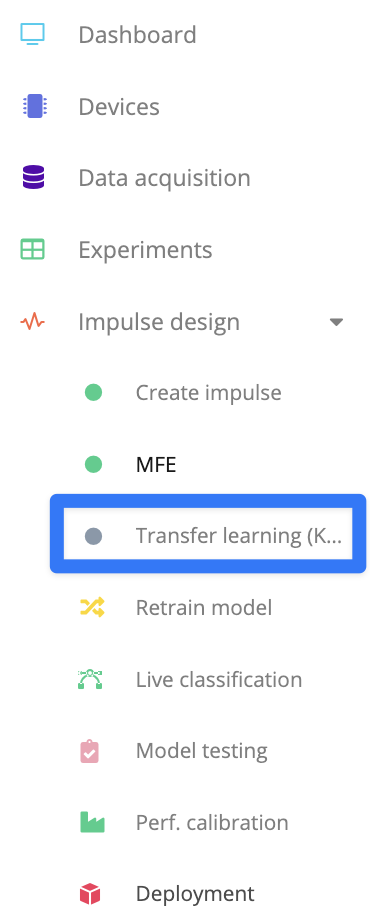
Select learning block
Save & train and you’ll eventually see an output like this:

Training
Testing
Go to theModel testing section and enable int8 testing:
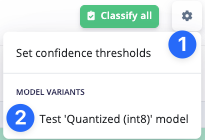
Select int8 testing
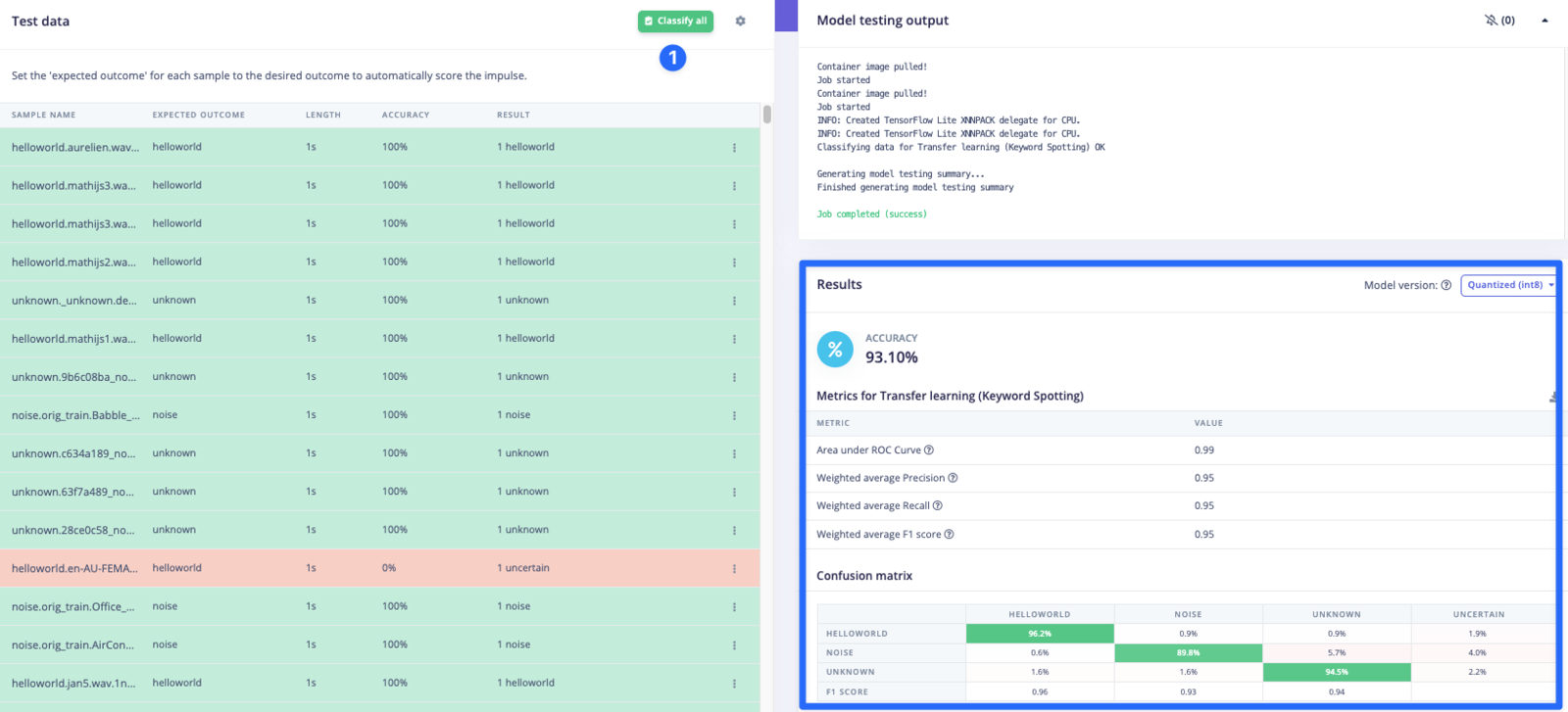
Test results
Deploying
Navigate to theDeployment section and choose the Apollo4 Blue Plus:
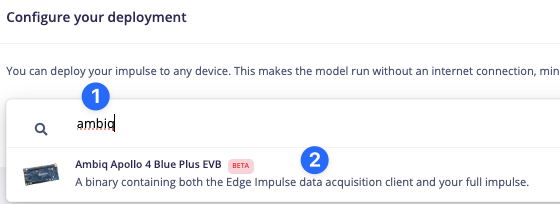
Selecting the Apollo4
Build and wait for the job to finish, when it does a zip archive will be downloaded to your computer:
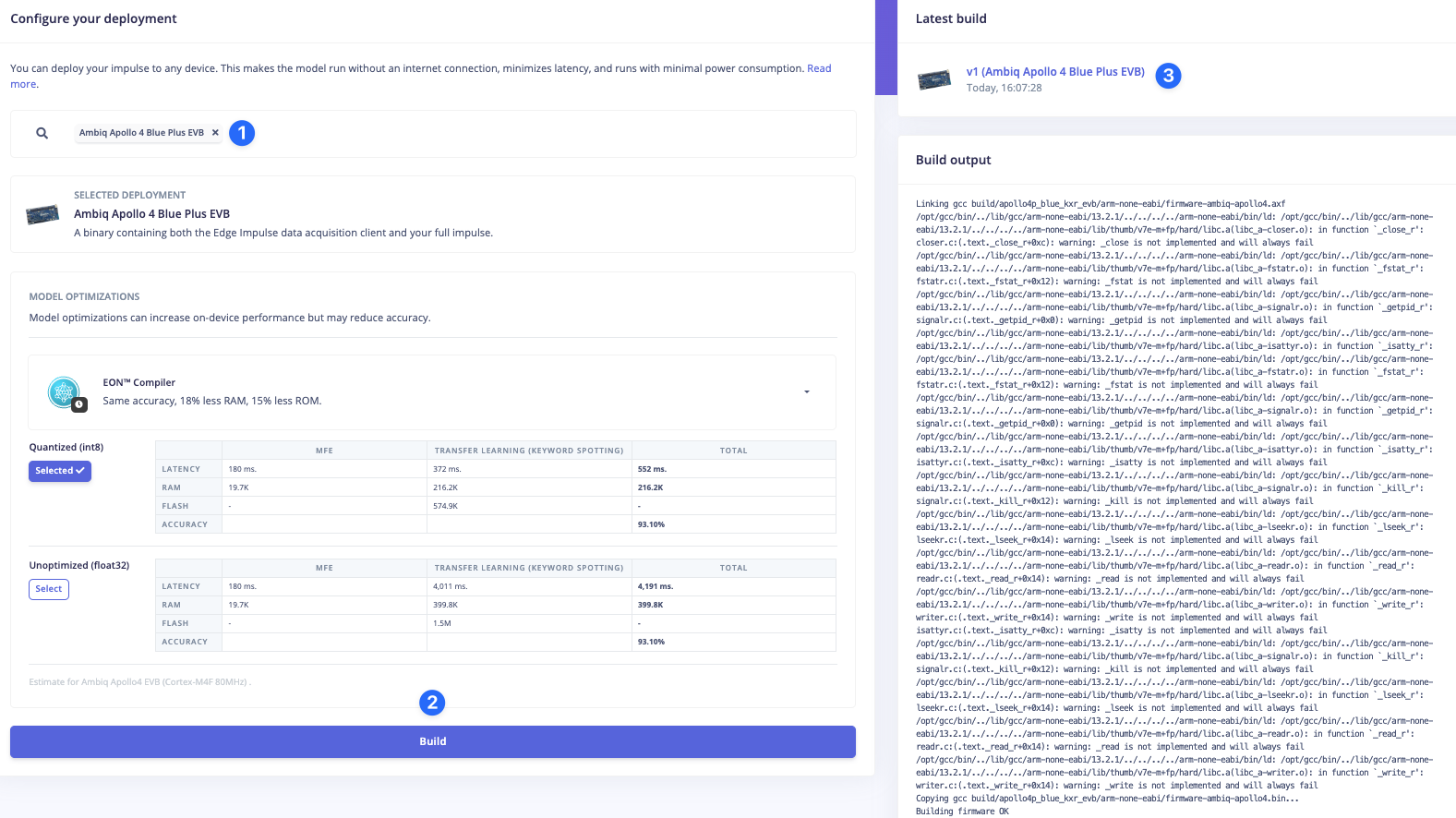
Building the binary
Flashing
See the previous section on flashing the board.Running the impulse
You can run your impulse by usingedge-impulse-run-impulse:
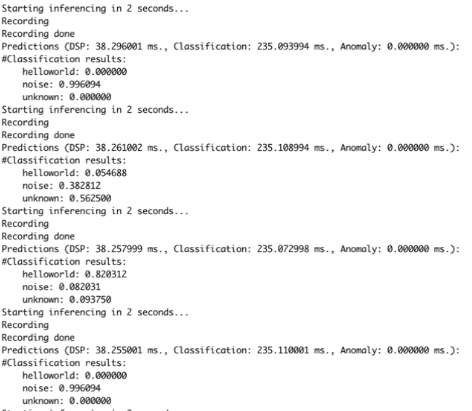
Running the impulse